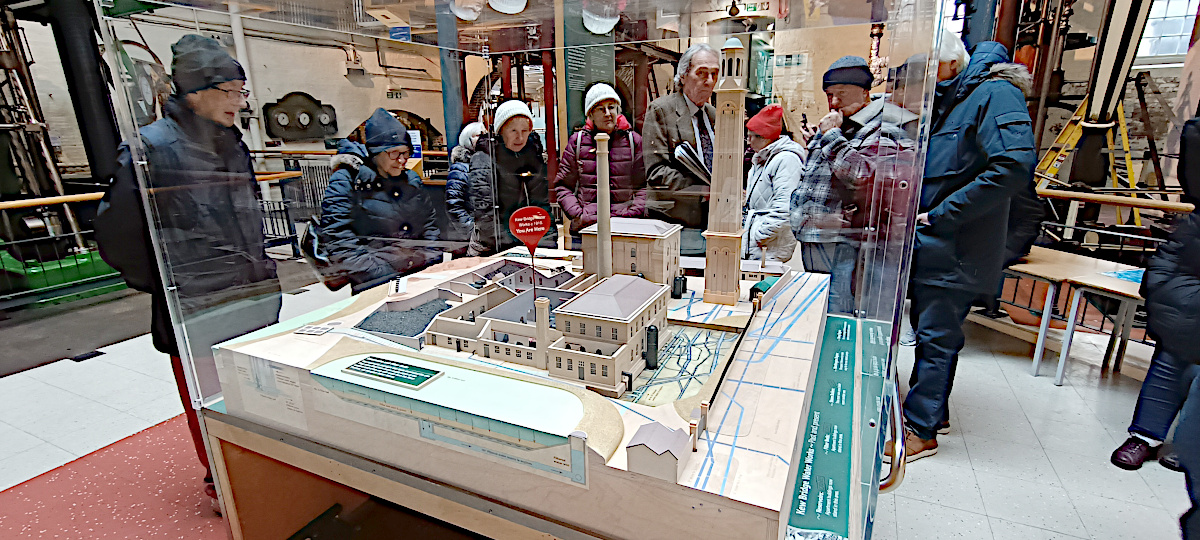On Friday 15 December 2023, a group of 15 Kenton & District u3a Members went to the London Water and Steam Museum in Kew, West London. Located on the North side of the River Thames at a bend in the river, the 200 ft high standpipe tower is a familiar landmark and is in the grounds of the museum. To our surprise, the tower is not a chimney, and is not used for storing water: it was used to maintaining a steady water pressure between the 6 – 10 strokes per minute of the pumping equipment! For the visit, we had an enthusiastic and knowledgeable expert in the form of David, who guided us around the exhibits, and explained their importance to health in London in accessible terms.
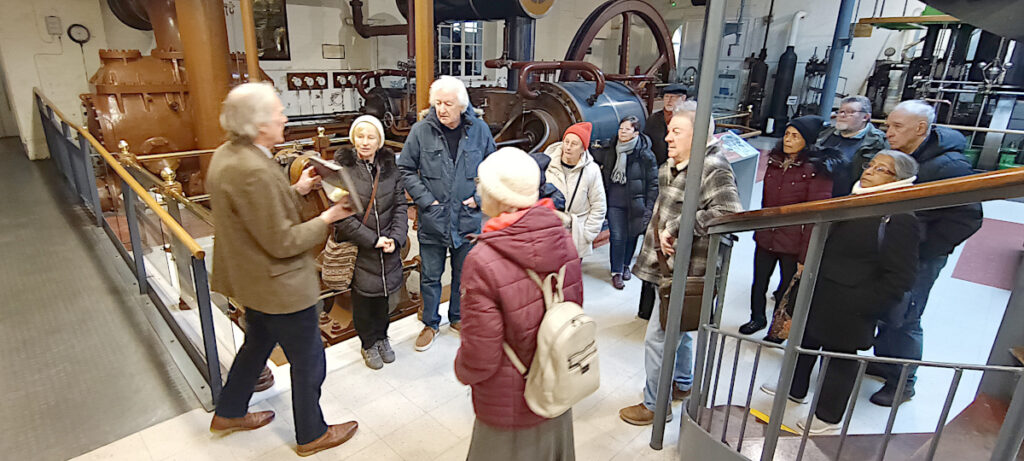
Until the middle of 19th Century, water was available but risky to drink. David explained how the water companies in London had developed in the various localities, and how the residents either had a supply delivered by underground pipe from their local company, or all the water had to be carried from a standpipe in the street – again supplied by the local company. The water companies also owned many of the canals, and used water pumped from the River Thames to maintain their levels too.
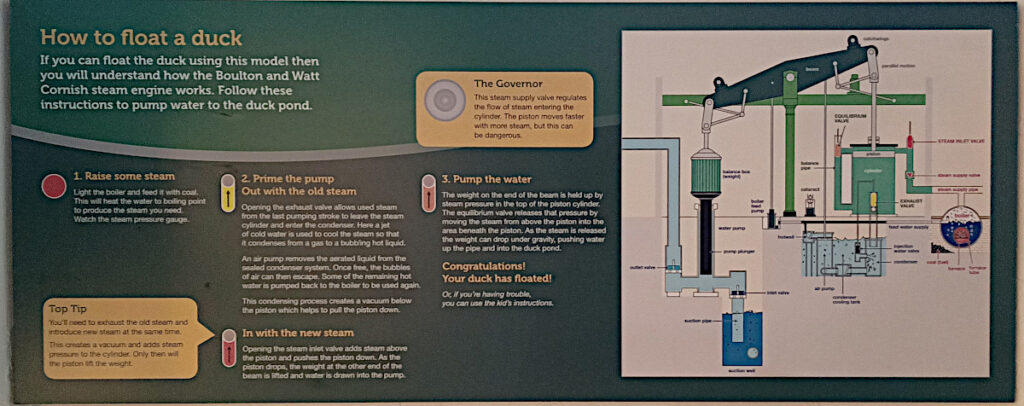
We learned about the Steam Engines used to raise water at Kew from the River Thames, so that it could be delivered down the local pipes at pressure to the houses. The development of the different types of steam engine for pumping water were explained, starting with the Atmospheric Engine of Thomas Newcomen in 1726. We then learned how James Watt had improved the design with the separate condenser, and how Richard Trevethick used his experience in high pressure steam engines, pumping water from Cornish mines, to improve the pumps used for water distribution. After the explanation, we had a chance to see a model demonstrating the principles before viewing one of the actual beam engines that was still pumping water until about 1944. The pumps are still operated when the Museum has a Steam Day (30 Dec 2023 – 01 Jan 2024).
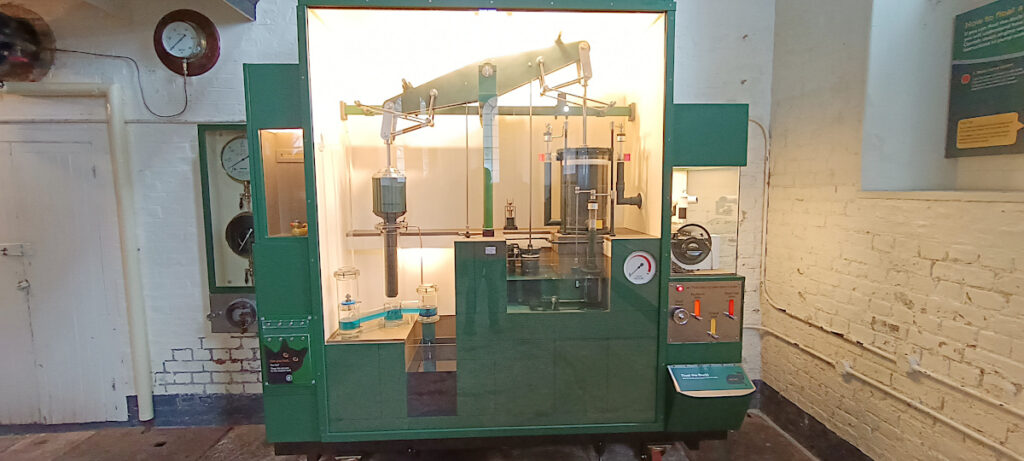
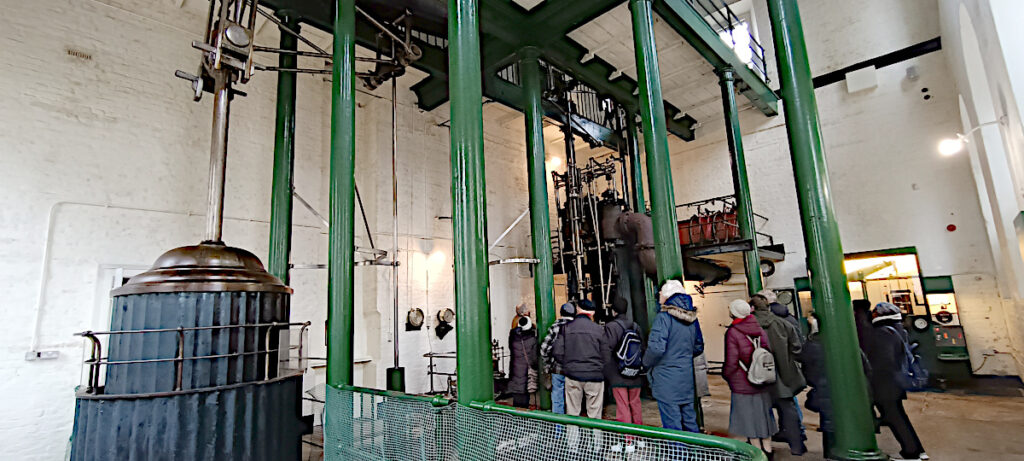
We then moved forward in time and had a demonstration of how the modern pumping equipment worked, powered by electricity, and the equipment that was required to make the electricity, and how the pump itself actually worked.
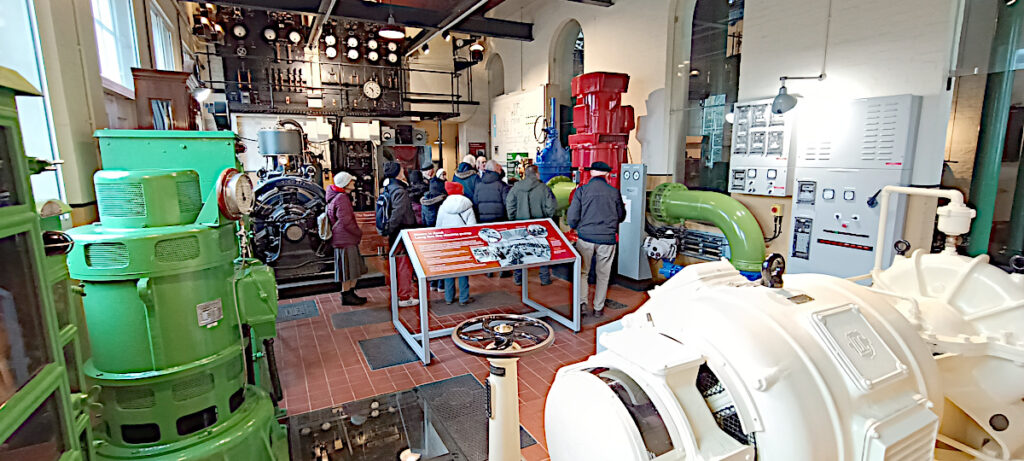
But delivering water through pipes was only part of the story.
In the early 19th Century in London, death by cholera frequently exceed 10,000 people each year, and there was no clear understanding of the disease. In 1854, scientist John Snow decided that cholera was a water borne disease, and removed the handle from the stand pump in Broad Street in Soho (now Broadwick Street). The outbreak of cholera is Soho immediately declined and there is a replica pump (without a handle) outside the John Snow pub in Broadwick Street to this day. With the understanding that the disease was carried by contaminated water, sadly there was still no decision to fix the problem until the ‘Big Stink’ in 1858, when the smell of sewage prevented business in the Houses of Parliament, and then action was taken.
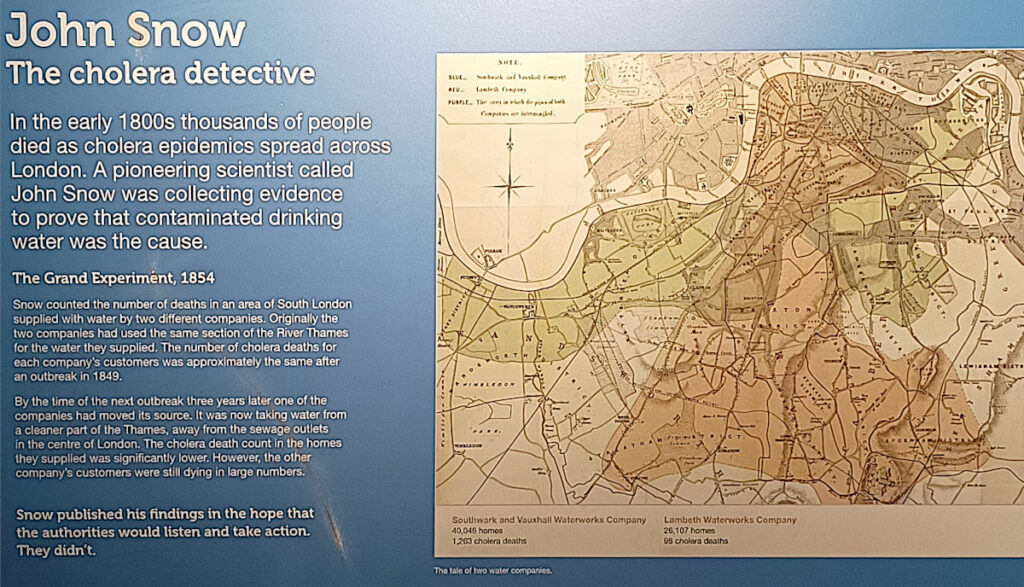
Today, the four-stage process of water treatment is much better understood, and that was the process that was conducted in Kew until the 1940s when work ceased, and the decision was taken to preserve the site as a museum. The work is now conducted outside London on the Western edges, where there is access to cleaner water from the River Thames than would be available in Central London.
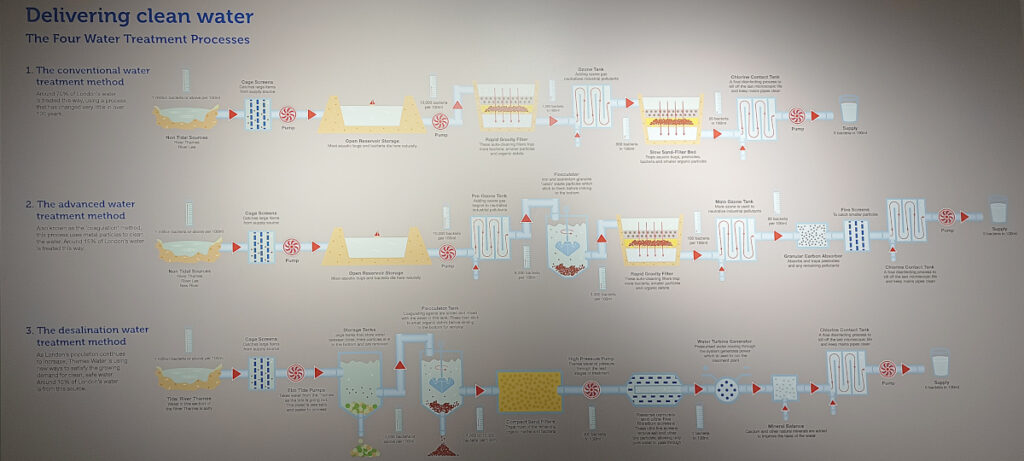
This was a fascinating story, bringing together technology, engineering and public health in a unique way. We are indebted to our guide David for his enthusiasm and his non-technical explanations of how everything worked. We also thank Louise for preparing the visit, and doing all the detailed planning that made the event run so smoothly.

